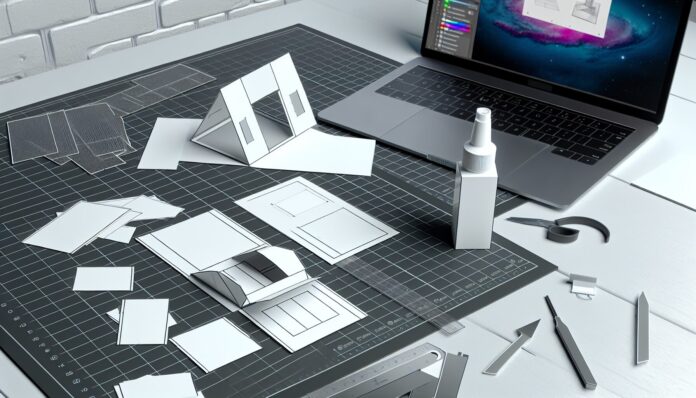While 3D printing has revolutionized prototyping and design, not every project requires a high-tech solution. A recent project featured on Hackaday showcases how paper modeling can serve as a surprisingly effective alternative to 3D printing, especially for those seeking a low-cost, hands-on approach to creating physical models.
Paper Modeling: A Hands-On Alternative to 3D Printing
In a world increasingly dominated by digital fabrication, paper modeling offers a refreshing return to tactile creativity. The project, developed by a maker known as [name if available], demonstrates how to use paper, glue, and a bit of patience to create detailed 3D models. The process involves designing a 3D object in software, unfolding it into a 2D net (also known as a papercraft template), printing it on paper, and assembling it by hand.
This method is not only cost-effective but also accessible to anyone with a printer and basic crafting tools. It’s particularly useful for early-stage prototyping, educational purposes, or simply for hobbyists who enjoy the process of building physical models without the need for expensive equipment.
How It Works: From 3D Model to Paper Template
The workflow begins with creating a 3D model using CAD software such as Blender, SketchUp, or Fusion 360. Once the model is complete, it is exported to a format compatible with unfolding software like Pepakura Designer or similar tools. These programs convert the 3D geometry into a 2D layout that can be printed on standard paper or cardstock.
After printing, the user cuts out the pieces, folds along the designated lines, and glues the tabs to assemble the final 3D shape. The result is a tangible model that closely resembles its digital counterpart, offering a physical representation that can be used for visualization, testing, or display.
Applications and Benefits of Paper-Based Prototyping
Paper modeling has a wide range of applications. In education, it can be used to teach geometry, engineering, and design principles. In architecture and product design, it allows for quick, low-cost mockups that help visualize form and function before committing to more expensive materials or processes.
For hobbyists and makers, paper modeling is a rewarding craft that combines digital design with hands-on construction. It also serves as a valuable tool in environments where access to 3D printers is limited or where sustainability and material reuse are priorities.
Moreover, paper models can be scaled easily, modified quickly, and recycled after use, making them an environmentally friendly option for iterative design. While they may not offer the durability or precision of 3D-printed parts, they excel in speed, simplicity, and accessibility.
Limitations and Considerations
Of course, paper modeling has its limitations. It’s not suitable for functional parts or components that require mechanical strength. The assembly process can be time-consuming and requires a steady hand and attention to detail. Additionally, complex geometries may be difficult to unfold and assemble accurately.
However, for many use cases—especially in the early stages of design or for purely visual models—these limitations are outweighed by the benefits. Paper modeling encourages a deeper understanding of geometry and structure, and it fosters creativity in problem-solving and design thinking.
Conclusion: A Complementary Tool in the Maker’s Toolbox
While 3D printing remains a powerful tool for modern fabrication, paper modeling offers a compelling alternative that is both accessible and educational. It’s a reminder that innovation doesn’t always require high-tech solutions—sometimes, all you need is paper, glue, and a bit of imagination.
Whether you’re a student, designer, or hobbyist, exploring paper modeling can expand your creative toolkit and provide a new perspective on physical prototyping.
Source: Hackaday

